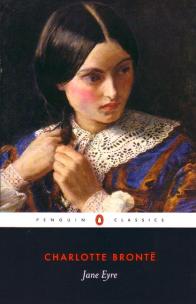
Jane Eyre book cover
‘Jane Eyre’ is a novel written by Charlotte Brontë that was published in 1847. The last edition belongs to Heinemann publishers and has 38 chapters.
Charlotte Brontë was born in 1816 in Thornton, Yorkshire and she was the third daughter to a clergyman. She had a sister who was a writer as well, Emily Brontë (author of ‘Wuthering Heights’). She married Arthur Bell Nichols and died in March, 1855. Her most notable works are ‘Jane Eyre’ and ‘Villete’; both of them published under the pen-name of Currer Bell and enjoying immediate success.
From the very beginning of the story we can perceive Jane’s strong will and integrity, since it is the story of an orphan cultivated by a wealthy family which motivates much of the novel’s conflict, because Jane lives off the charity of others. As a consequence, Jane suffers mistreatment at the hands of John Reed and his wife. That way, Jane’s confinement to the red room represents her inferior position and the feeling of isolation with respect to her own society. Also, Jane’s early years at Lowood make her endure hard conditions as a student and despite her intelligence, talent and self-assurance she is only a burden for the society because she is poor.
After that she begins her career as a governess and travels to Thornfield. There she will experience some sort of new feelings towards Rochester, her servant. Because of that, she starts to think about social equality, freedom and personal growth, as she cannot believe that he could ever fall in love with her.
This novel is recognized as being one of the pioneer works of female literature in England, indeed, it has in some way a critical view through a formal complaint about how class and gender hierarchies contribute to send some people to ‘exile’. So, I really found valuable what Charlotte Brontë transmits against social injustice and preconceptions of 19th -century Victorian society, because she defends autonomy, education and freedom beyond appearances and social class.
María H., 2nd Baccalaureate